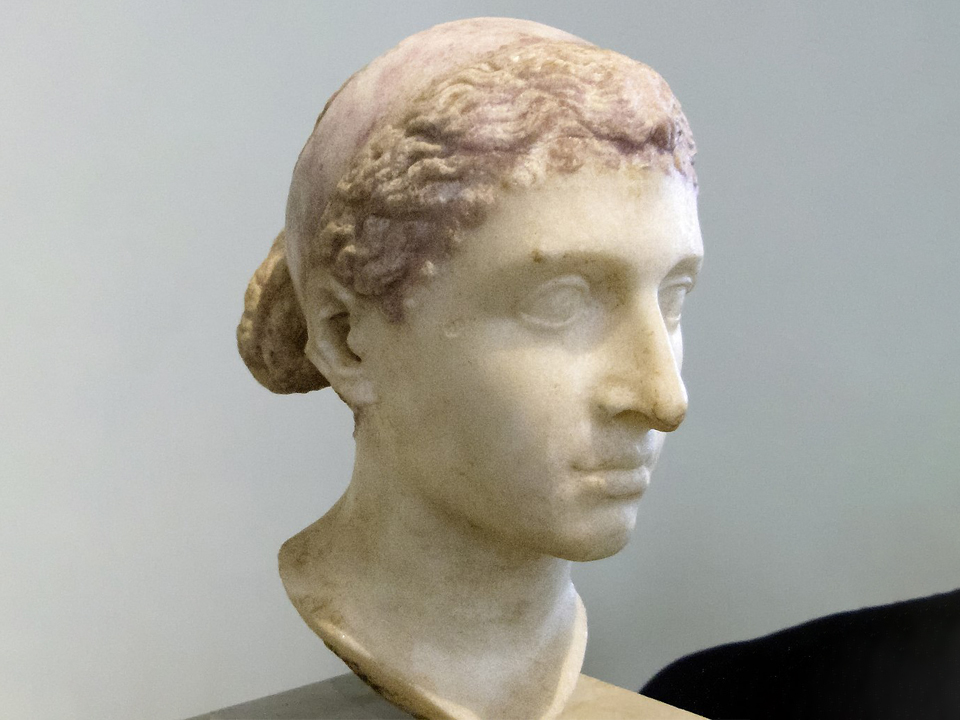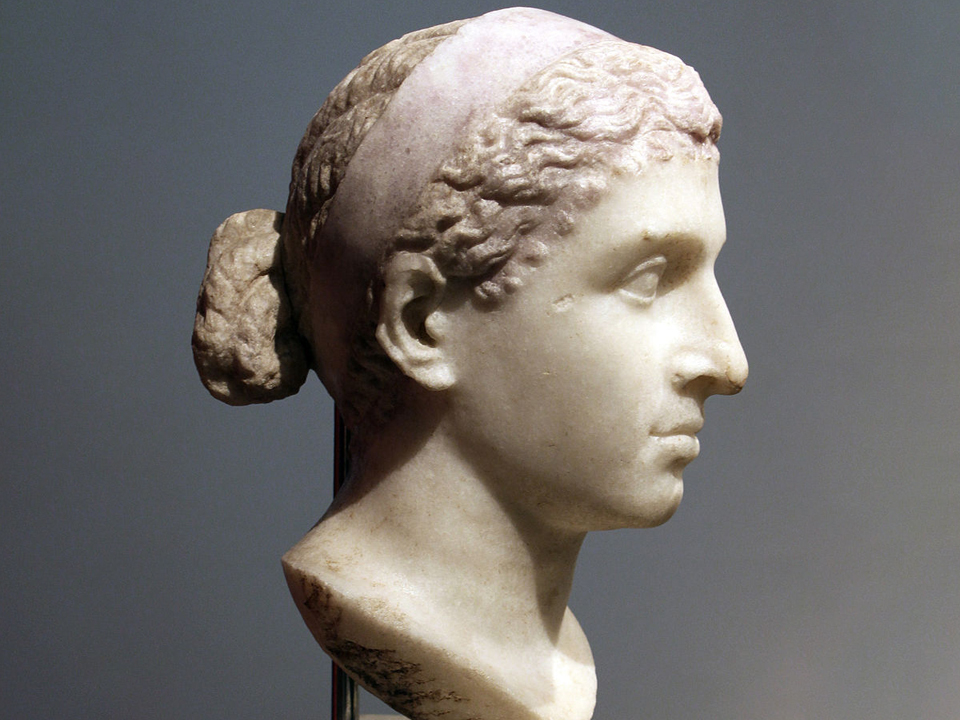Cleopatra VII — c. 69-30 BCE


After Egypt had been conquered by Alexander the Great and absorbed by the Persian empire, a dynasty of pharaohs referred to as the Ptolemys rose to power. The most famous of these was Cleopatra VII, the ill-fated and much-maligned queen of the Elizabeth Taylor film, or of Shakespeare’s Antony and Cleopatra.
Cleopatra had been serving as co-regent with her father when her brother and husband, Ptolemy XIII rose to power. Ptolemy XIII exiled her from Alexandria, then the capital of Egypt. But, when Ptolemy became involved in the murder of Pompey the Great, Julius Caesar took action.
In the ensuing Battle of the Nile, Ptolemy XIII was killed and Cleopatra VII was restored to the throne, alongside her other brother, Ptolemy XIV. Caesar stayed in Egypt long enough to have a child with Cleopatra, named Ptolemy XV Caesarion, then he returned to Rome, where he was famously killed (as portrayed in the other Shakespere play, Julius Caesar).
Taking quick action, Cleopatra had her brother killed so she could install her son as her co-regent, and secure her spot as queen in an unstable political environment.
A year later, Mark Antony arrives in Alexandria. The two begin a romance, from which Cleopatra bears three children. Antony then attempted to give parts of the Roman Empire to her and their children, an action that angered Octavian (later Augustus Caesar). He declared war on Cleopatra in 32 BCE. During the Battle of Actium, both Cleopatra and Antony committed suicide.
Cleopatra was not Egyptian by blood, having been of Macedonian (Greek) ancestry, but records indicate that in her time as queen, she was interested in preserving cultural traditions that had long been lost. She was the only Ptolemaic ruler to ever learn the ancient Egyptian language.

At-A-Glance
- Last pharaoh of Egypt
- Last ruler of the Ptolemaic Dynasty
- Reign from c. 51-30 BCE


